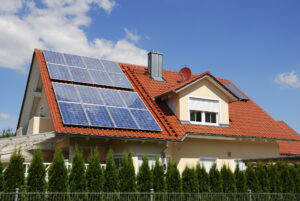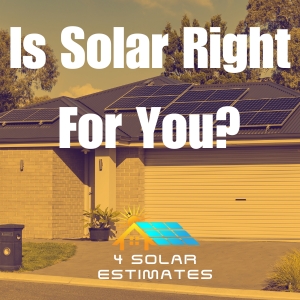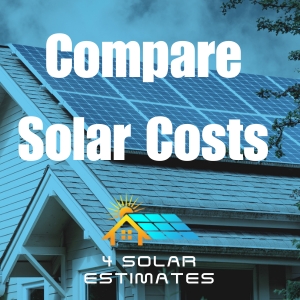
Investment in Solar Energy: Analyzing the Long-Term Cost Benefits
As the world grapples with climate change and the need for sustainable energy sources, solar energy has emerged as a leading solution. The decline in the cost of solar panels, coupled with advancements in technology, has made solar energy an attractive investment for homeowners, businesses, and governments alike. However, understanding the long-term cost benefits of solar energy requires a comprehensive analysis of various factors, including installation costs, maintenance, energy savings, and potential financial incentives. This blog will delve into the long-term cost benefits of investing in solar energy, providing you with the information needed to make an informed decision.
The Initial Investment in Solar Energy
The upfront cost of installing solar panels can be substantial, but it has decreased significantly over the past decade. As of 2024, the average cost to install a solar panel system in the United States ranges from $10,000 to $25,000, depending on the system size and location. This cost includes the panels themselves, inverters, mounting hardware, and labor.
Factors Influencing Installation Costs:
- System Size: Larger systems generate more electricity but cost more to install. The size you need depends on your energy consumption.
- Location: Solar installation costs vary by region due to differences in labor rates, permitting fees, and local incentives.
- Equipment Quality: Higher-quality panels and inverters may have higher upfront costs but can offer better performance and longer lifespans.
- Roof Characteristics: The type and condition of your roof can affect installation costs. Complex roof designs or the need for structural upgrades can increase expenses.

Financial Incentives
To offset the initial investment, various financial incentives are available at the federal, state, and local levels. These incentives can significantly reduce the net cost of solar installation.
Federal Tax Credit: The federal Investment Tax Credit (ITC) allows you to deduct 26% of the cost of installing a solar energy system from your federal taxes. This credit is set to decrease in the coming years, so early adoption can maximize your savings.
State and Local Incentives: Many states and municipalities offer additional incentives, such as rebates, grants, and property tax exemptions. These incentives can vary widely, so it’s essential to research what’s available in your area.
Net Metering: Net metering programs allow you to sell excess electricity generated by your solar panels back to the grid, further reducing your energy costs. The specifics of net metering policies differ by state and utility company.
Long-Term Cost Benefits
One of the most significant long-term benefits of investing in solar energy is the reduction in your electricity bills. Solar panels generate electricity from sunlight, which means that once installed, they produce power for free. Over the lifespan of a solar panel system (typically 25-30 years), the savings on electricity bills can be substantial.
Estimating Energy Savings:
- Average Electricity Usage: Assess your average monthly electricity consumption to determine the potential savings.
- Utility Rates: Higher electricity rates increase the financial benefits of going solar. Rates can vary significantly by region.
- System Efficiency: The efficiency of your solar panel system affects how much electricity it can generate. High-efficiency panels can provide more savings.
- Sunlight Exposure: The amount of sunlight your location receives impacts the energy production of your solar panels.
Return on Investment (ROI)
The ROI of a solar panel system is calculated by comparing the cost of the system to the financial benefits it provides over its lifetime. Most solar panel systems pay for themselves within 6-10 years, depending on factors like installation costs, available incentives, and electricity rates.

Calculating ROI:
- Initial Costs: Include installation costs minus any financial incentives.
- Annual Savings: Estimate the yearly savings on your electricity bills.
- Payback Period: The time it takes for your energy savings to cover the initial investment.
- Lifetime Savings: The total savings over the system’s lifespan, which can be 25-30 years or more.
Increased Property Value
Investing in solar energy can also increase the value of your property. Homes equipped with solar panels often sell at a premium compared to those without. This added value can be a significant long-term financial benefit.
Factors Influencing Property Value Increase:
- Energy Savings: Potential buyers recognize the cost savings on electricity bills.
- Environmental Appeal: Eco-conscious buyers are willing to pay more for homes with sustainable energy solutions.
- Market Trends: In regions where solar energy is popular, homes with solar panels may be more in demand.
Environmental Benefits
While this blog focuses on the financial aspects, it’s essential to acknowledge the environmental benefits of solar energy. Investing in solar energy reduces your carbon footprint and contributes to the global effort to combat climate change.
Key Environmental Benefits:
- Reduced Greenhouse Gas Emissions: Solar panels produce electricity without emitting greenhouse gases.
- Decreased Fossil Fuel Dependence: By generating your electricity, you reduce reliance on non-renewable energy sources.
- Sustainable Energy Source: Solar energy is renewable and abundant, making it a sustainable choice for the long term.
Maintenance and Longevity
Solar panels are generally low-maintenance, but they do require some upkeep to ensure optimal performance. Regular maintenance includes cleaning the panels to remove dirt and debris and checking for any potential issues with the system.
Typical Maintenance Activities:
- Cleaning: Removing dust, leaves, and other debris from the panels to maintain efficiency.
- Inspections: Regularly inspecting the system for any signs of wear or damage.
- Repairs: Addressing any issues promptly to prevent them from affecting the system’s performance.
Longevity and Warranties
Most solar panels come with warranties that guarantee their performance for 25-30 years. Inverters, which are crucial for converting the generated electricity into usable power, typically have shorter warranties (10-15 years) but can be replaced at a relatively low cost.
Understanding Warranties:
- Performance Warranty: Ensures the panels will produce a certain amount of electricity for a specified period.
- Product Warranty: Covers defects in materials and workmanship.
- Inverter Warranty: Usually shorter than the panel warranty but critical for system performance.

Technological Advancements
The solar industry is continually evolving, with advancements in technology making solar panels more efficient and affordable. Innovations such as higher-efficiency panels, improved inverters, and energy storage solutions are enhancing the value of solar investments.
Recent Technological Developments:
- Bifacial Panels: Capture sunlight on both sides of the panel, increasing energy production.
- Microinverters: Improve the performance of individual panels and offer better system monitoring.
- Battery Storage: Allows for energy storage, providing power during nighttime or cloudy days and increasing energy independence.
Solar Energy Financing Options
If the initial cost of solar installation is a barrier, several financing options can make it more accessible. These options include solar loans, leases, and power purchase agreements (PPAs).
Solar Loans
Allow you to finance the cost of installation with monthly payments. Once the loan is paid off, you own the system and benefit from the energy savings.
Solar Leases
Enable you to lease the solar panels from a provider, paying a monthly fee. The provider maintains ownership and is responsible for maintenance.
Power Purchase Agreements (PPAs)
Similar to leases, but you pay for the electricity generated by the panels rather than leasing the equipment. The provider owns and maintains the system.

Comparing Financing Options
- Ownership: Solar loans allow you to own the system, while leases and PPAs do not.
- Upfront Costs: Leases and PPAs often require little to no upfront cost, whereas loans may require a down payment.
- Monthly Payments: Leases and PPAs typically have lower monthly payments compared to loan repayments.
Potential Challenges
While the long-term benefits of solar energy are significant, there are potential challenges to consider.
Initial Cost: The upfront cost can be substantial, although incentives and financing options can mitigate this.
Energy Production Variability: Solar panels’ energy production can fluctuate based on weather conditions and location.
Space Requirements: Sufficient roof or land space is necessary for optimal solar panel installation.
Regulatory Hurdles: Navigating permits and regulations can be complex, depending on your location.
Future Outlook for Solar Energy
The future of solar energy looks promising, with continued advancements in technology and increasing adoption rates. Governments worldwide are promoting renewable energy through incentives and regulations, making solar energy an even more attractive investment.
Trends to Watch:
- Decreasing Costs: Continued reduction in the cost of solar panels and related technology.
- Improved Efficiency: Advancements in panel efficiency and energy storage solutions.
- Government Policies: Supportive policies and incentives encouraging solar adoption.
Investing in solar energy offers numerous long-term cost benefits, from significant savings on electricity bills to increased property value. While the initial installation costs can be high, financial incentives, advancements in technology, and various financing options make solar energy more accessible and affordable. Moreover, the environmental benefits of reducing your carbon footprint and contributing to sustainable energy solutions add to the value of this investment.
As you consider investing in solar energy, evaluate your energy needs, research available incentives, and choose a reputable installer. With careful planning and informed decision-making, you can enjoy the financial and environmental benefits of solar energy for decades to come.

Leave a Reply